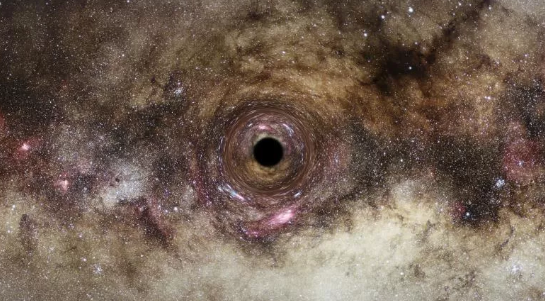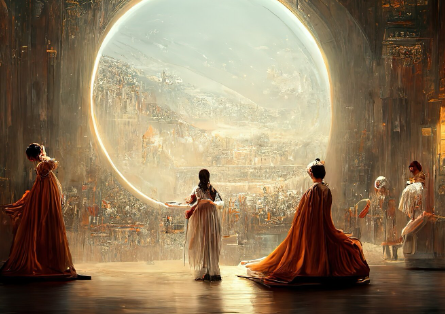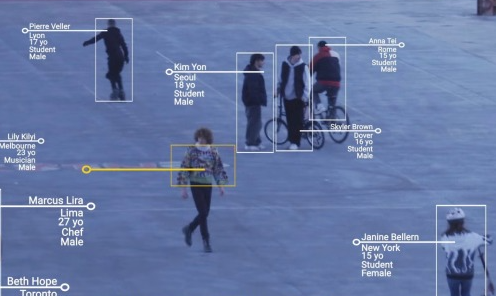괴물 블랙홀 발견, 태양질량의 327억배
Astronomers Just Discovered a 'Supermassive' Black Hole.
'Hard to Comprehend How Big This Thing Is.'
천문학자들이 '초대질량' 블랙홀을 발견했습니다.
'이것이 얼마나 큰지 이해하기 어렵습니다
Astronomers say they have found one of the universe's largest black holes
to date using a new technique.
Scientists at Durham University discovered the "ultramassive" black hole
by observing its pull on passing light, called gravitational lensing.
천문학자들은 새로운 기술을 사용하여 우주에서 가장 큰 블랙홀 중 하나를 발견했다고 말합니다.
더럼 대학의 과학자들은 중력 렌즈를 통과할때 빛을 관측함으로써 "초대질량" 블랙홀을 발견했습니다.

Dr James Nightingale who led the study said even he struggled to "comprehend how big this thing is".
Their findings have been published in the journal Monthly Notices of the Royal Astronomical Society.
The academics said the black hole was 30 billion times the size of our Sun
and was the first to be measured using gravitational lensing.
연구를 이끈 제임스 나이팅게일 박사는 자신도 "이것이 얼마나 큰지 이해하는 데" 어려움을 겪었다고 말했습니다.
그들의 발견은 Royal Astronomical Society의 Monthly Notices 저널에 게재 되었습니다.
학자들은 블랙홀이 우리 태양의 300억 배 크기이며 중력렌즈를 이용해 측정한 최초의 것이라고 말했습니다.
Dr Nightingale told BBC Radio Newcastle:
"Even as an astronomer, I find it hard to comprehend how big this thing is.
"If you look at the night sky and count up all the stars and planets
you can see and put them in a single point, it would be a fraction of a percent the size of this black hole.
나이팅게일 박사는 BBC 라디오 뉴캐슬과의 인터뷰에서 "천문학자로서도 이것이 얼마나 큰지 이해하기 어렵습니다.
"만약 밤하늘을 보고 볼 수 있는 모든 별과 행성을 세어 한 점에 넣으면 이 블랙홀 크기의 극소부분에 불과할 것입니다.
"This black hole is bigger than the majority of galaxies in the universe."
He said the discovery "pushes our understanding of astronomy to the limits",
adding: "How do you form a black hole this big in just 13 billions years of the universe's existence?"
"이 블랙홀은 우주에 있는 대부분의 은하보다 더 큽니다."
그는 이 발견이 "천문학에 대한 우리의 이해를 한계까지 밀어붙이고 있다"면서
"우주가 존재한 지 불과 130억 년 만에 어떻게 이렇게 큰 블랙홀을 형성할수 있는가?"라고 덧붙였습니다.
What is a black hole?
A black hole is a region of space where matter has collapsed in on itself.
The gravitational pull is so strong that nothing, not even light, can escape.
Black holes will emerge from the explosive demise of certain large stars.
But some are truly huge and are billions of times the mass of our Sun.
How these monsters - found at galaxy centres - formed is unknown.
But it is clear they energise the galaxy and will influence its evolution.
Source: Nasa
블랙홀이란 무엇입니까?
블랙홀은 물질 스스로가 붕괴된 공간 영역입니다.
중력이 너무 강해서 심지어 빛조차도 빠져나갈 수 없습니다.
블랙홀은 특정 큰 별의 폭발적인 소멸에서 나타날 것입니다.
그러나 일부는 정말 거대하고 우리 태양 질량의 수십억 배입니다.
은하 중심에서 발견되는 이 괴물들이 어떻게 형성되었는지는 알려져 있지 않습니다.
그러나 그것이 은하계에 에너지를 공급하고 은하계의 진화에 영향을 미칠 것이라는 것은 분명합니다.
"This particular black hole, which is roughly 30 billion times the mass of our sun,
is one of the biggest ever detected and on the upper limit of how large
we believe black holes can theoretically become,
so it is an extremely exciting discovery,"
"태양 질량의 약 300억 배에 달하는 이 특별한 블랙홀은
지금까지 발견된 것 중 가장 큰 블랙홀 중 하나이며
이론적으로 블랙홀이 얼마나 커질 수 있는지 상한선에 있기 때문에 매우 흥미로운 발견입니다."

























